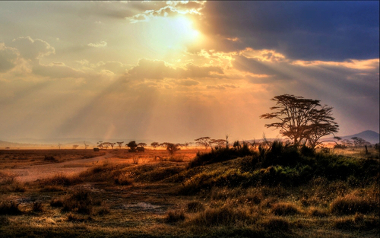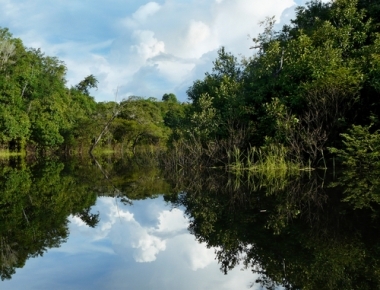It is understood by the concept of savannization the process of transforming a natural vegetation, such as a tropical or equatorial forest, into an area whose landscape resembles that of the savannas African or to thick Brazilian, with a sparse field, spaced trees and a smaller amount of leaves.
There are estimates, in this sense, that the Amazon Forest would be going through a serious and irreversible process of savannization, which would be responsible for large environmental impacts on the atmosphere and also on the biosphere terrestrial. According to the International Panel on Climate Change, the IPCC, the savannization of the Amazon would already be occurring and would be caused by deforestation of part of the forest itself, as well as by the effects of Global warming.
The theory that indicates the savanization process takes into account that deforestation of the forest can lead to greater soil exposure to the region's rains, causing it to be “washed” more intensely by the surface runoff of water, a process called in
leaching. With this, the availability of organic matter is reduced, causing the impoverishment of the soil and also the greater accumulation of sediments in the rivers, silting them up.With silted rivers, less fertile soils and, consequently, less abundant fauna, the number of trees decreases and the forest loses its its capacity to recover, being replaced by more spacious vegetation similar to that of part of the cerrado Brazilian. These small trees are conserved due to the fact that they are more adapted to the dry climate, which will become part of the local environment, as the Amazon itself was the main emitter of moisture in the air via evapotranspiration.
Another factor that would be contributing to the savannization of the Amazon would be the Global warming, as the relative reduction of forests and the average increase in temperatures on the planet could reduce the air humidity in areas of the Pacific, also causing the intensification of climatic anomalies such as O El Niño, which is responsible for events such as droughts in the Northeast and the decrease in Amazon rains, which would further contribute to the savannization of the Amazon forest.
Do not stop now... There's more after the advertising ;)

This could be the landscape of the Amazon if savannization occurs
Amazon savanization is not a consensus among researchers
Although many researchers and experts in the environmental field believe that savannization is not only possible, but that would be happening and that it would be better perceived in a short time, there is no consensus about it in the middle scientific.
Researchers from a research center in the United Kingdom claim that the theoretical models that touted the risk of savannization in the Amazon natural areas err by underestimating the capacity of the Amazon Forest to resist the possible effects of Global Warming, with the loss of moisture and increase in temperatures. For them, the rainforest could be transformed into a seasonal forest (with dry seasons and alternating wetlands) that would not turn into savannah, but would be, at the very least, more vulnerable to fires.
However, there is also a series of questions regarding the data released in 2007 by the IPCC on the possibility of savannization. Some scientists claim that the report was produced based on unsubstantiated claims by environmental groups and institutions, which erred in disregarding numerous variables on geographic conditions locations.
The renowned geographer Aziz Nacib Ab'Saber once said that the theory of the savannization of the Amazon, above all as a result of Global Warming, it was “nonsense”, in an interview with the newspaper O Estado de São Paul. For Ab'Saber, on the contrary, a natural phenomenon of “retropicalization” of the vegetation in the South American continent, due to geologically old variations of alterations in climates.
However, even the most skeptical researchers regarding the existence of savannization in the Amazon fear for the successive processes of deforestation, which could bring an end to the rainforest faster than any bioclimatic event resulting from the action. human. Therefore, in addition to conserving the forest, it is necessary to politically combat the groups responsible for its illegal exploitation.
By Rodolfo Alves Pena
Master in Geography
Would you like to reference this text in a school or academic work? Look:
PENA, Rodolfo F. Alves. "Savannization of the Amazon"; Brazil School. Available in: https://brasilescola.uol.com.br/brasil/savanizacao-amazonia.htm. Accessed on June 28, 2021.


